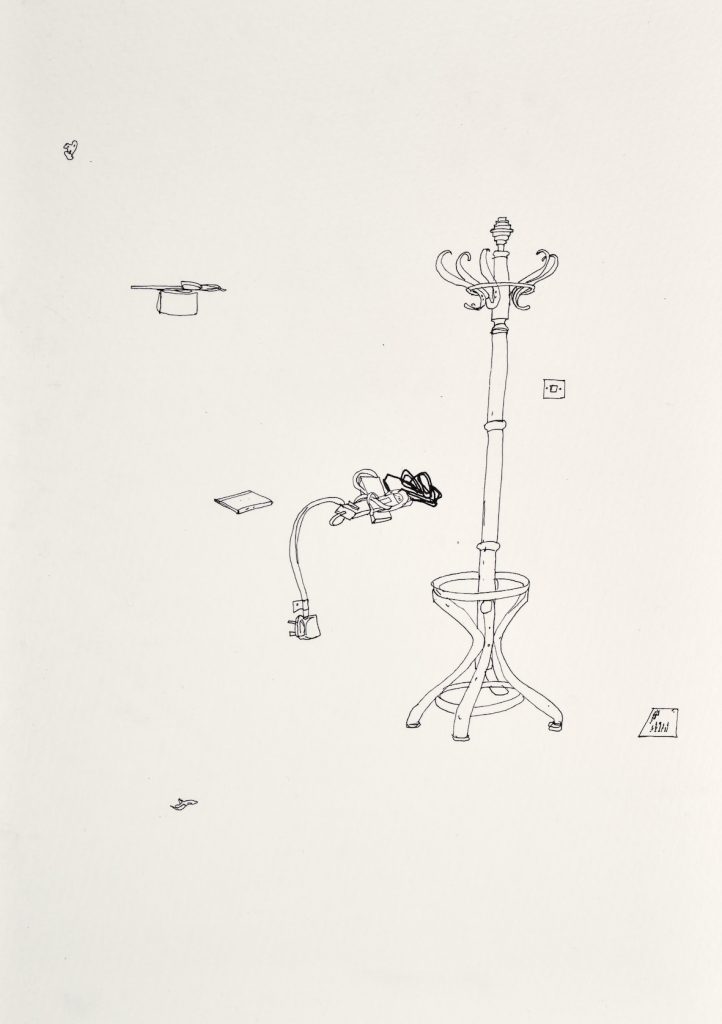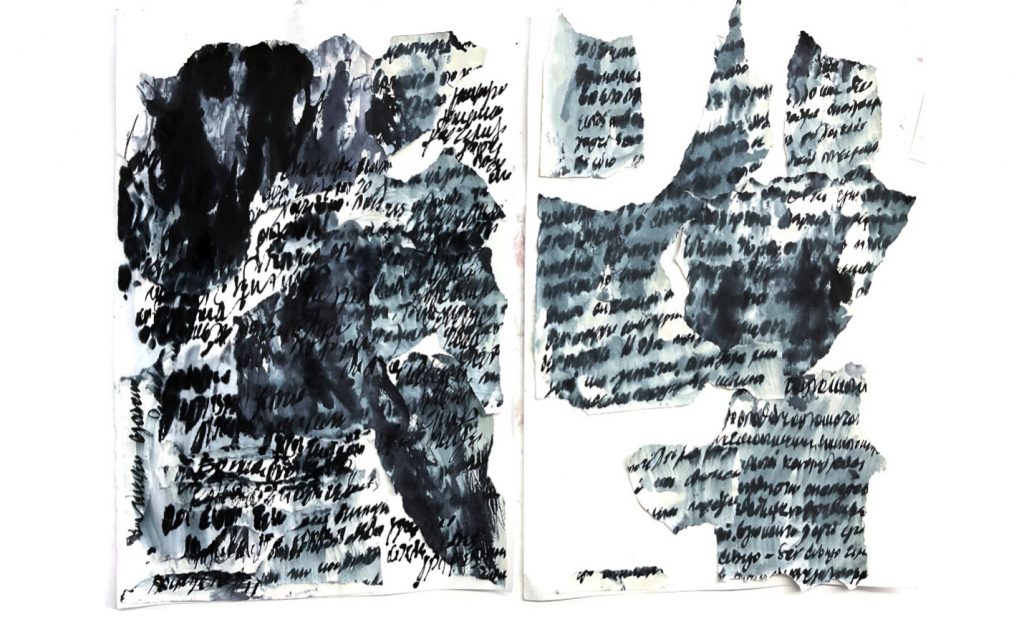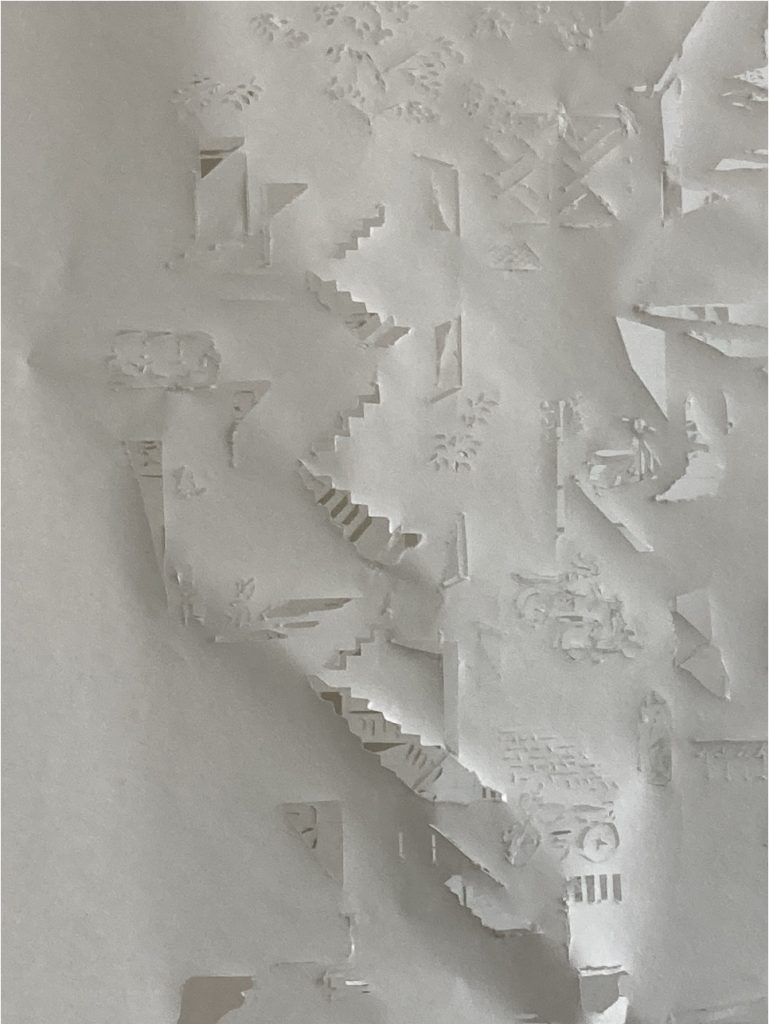DRN2025 Drawing Negation: Absence online event
11.00 (BST) 21 May 2025
Tickets: https://app.tickettailor.com/events/drawingresearchgroup/1691134



Images: Ellen Bell, Anthi Kosma & deepani seth
This panel brings together artist-researchers exploring aspects of absence within the theme of drawing negation.
Anthi Kosma’s presentation, Water Cut, will discuss her drawing practice, in which she often uses automatic, spontaneous writing-drawing, the “language of doubt” borrowed from the tradition of surrealists. Despite their uncontrolled gesture there is always a kind of control or gestural bias in these processes. To force a non-deterministic, preconstructed, “closed meanings” type of “writing” or to negate personal “customs” Kosma uses two techniques of purposive breaks: watering and cutting drawing. At first, Kosma rewrote drawings with water. Drawing a layer of “letters” of “invisible ink” to give, in the beginning, the impression of ´drawing a blank´. However, the watery gesture dissolves the ink, provoking an intended destruction of the initial drawing. Water rippling accidents convert ink into aquarela, well-defined lines in diffused, non-defined shades, and wet deformed spots invite an impressionist reverie. Watering ink traces are, in a way, a gesture of catastrophe (Deleuze, 2003). Another intentional gesture of unintentional, uncontrolled, and arbitrary result that follows is to cut the drawing. Cut the watered papers into pieces. Fragmented parts of “letters”, pieces of a mosaic or non-defined puzzle, broken drawings, and divided surfaces of unlinked sentences, an open puzzle. The self in front of infinitive possibilities. Kosma lets the hands re/combine the pieces, and reform them into a new monster drawing.
The presentation will be presented as a praxiological diary, documenting notes on drawing practice as negation. The use of a diary, functioning as a daily/temporal record of events and experiences, enables an insider’s observation and works as a phenomenological investigation that accompanies theoretical references into the phenomenon of drawing.
Ellen Bell’s presentation, Losing and loss: how can the ‘undrawn’ spaces of the page show such disappearing? uses the daily drawings that Bell makes in her deceased neighbour’s flat as its core, to explore what the “unreadable, the mere empty page” (Lubbock, 2012: 161) is doing in, and for, these images. Encapsulated for Bell in this temporarily-abandoned space and made manifest in the slug trails on the carpet, loss, though emotional and physical (Kubler Ross, 1969), is nebulous and about which “I am no longer able to speak” (Blanchot: 1979). If so, Bell suggests three questions arise: first, how can her drawings tell of it? Second, if, as Tuan (1997: 12) suggests, “space can be…experienced as the relative location of objects”, what role does the negative space – that “rhetoric of borders” (Derrida,1993: 3), shaped and delineated by the penned-lines that form the beds, tables, chairs and objects – play in showing the drawings’ loss-meaning signification? Or perhaps, this “white area”, as in Lubbock’s (2012: 163) critique of Beardsley’s drawings, “doesn’t take form” or meaning, and remains “inarticulate, an expanse of whiteness, into which nothing can be read.” Might this be akin to Derrida’s (1972: 26) différance, where, “there is no name because to define it is to make it a representation?” Third, if all this is true, what possibilities remain for these ‘undrawn’ spaces? Might they be, for the viewer at least, “a door through which moments of a life could enter?” (Berger 2012: 68)
Deepani Seth’s presentation, Drawing the Remembered House, Seth presents a body of work that evokes the absent home by creating negative spaces representing the house. The gaps cut into the surface, express the migrant’s loss of home, and materialise this loss, as well as the longed-for object. This work forms a part of Seth’s research into the relationship between home and house, in the context of postcolonial migration.
Now situated in Tasmania, Seth draws from memory, houses that she has lived in, in Delhi and Bombay. Seth draws, by cutting precisely into the surface of paper, elements of houses and neighbourhoods formerly inhabited, and which are no longer accessible to her.
Examining this practice and the resultant artwork, Seth asks: can remembering a home-place, from across the distances created by migration, present new meanings of home, and its relation to house? And, how does expressing absence by drawing negative spaces into the surface of material present new meanings of the remembered home?
I propose that the act of drawing (cutting-out) negatives in the surface make present the absent home-place. The process resembles the homesick person’s relationship with the home: the absent home, unattainable except in memory, is made present in utterances. The negative spaces cut into the paper act as portals. These portals, layered and imperfectly aligned against other surfaces and gaps, create a space in which the absent home is animated.
Biographies:
Anthí Kosma also known as anthokosmos, studied Architecture at the Democritus University of Thrace (DUTH, 2005) and get her PhD from the School of Architecture at the Polytechnic University of Madrid (2014, Cum Laude and Special Mention). Her research focuses on drawing as an improvisation act and sentimental writing. Since 2019, she has been a visiting lecturer at the Department of Architecture at the University of Thessaly.
Ellen Bell is an artist and writer, Bell is currently studying full-time for a practice-based, drawing research PhD at Leeds Beckett University, exploring how drawing can help us understand loss. https://www.instagram.com/belle16isdrawing/
deepani seth is pursuing a PhD in Architecture and Built Environment at the University of Tasmania. Previously, she has worked as a design researcher in public health and early education. Her illustrations and text-and-image narratives have appeared in print, in publications by Yoda-Sage, Zubaan and CSDS-Sarai.
DRAWING RESEARCH NETWORK
hosted by TRACEY at Loughborough University